2011 in Questions
Several projects were completed in 2011; others continued; or were initiated. Board members give their take on the year's highlights and on significant decisions in their areas of responsibility.
Nicolas About
 On 12 December 2011, the Conseil welcomed the signature of the charter relating to subtitling quality. What are the main provisions? What are the next projects in the area of accessibility? On 12 December 2011, the Conseil welcomed the signature of the charter relating to subtitling quality. What are the main provisions? What are the next projects in the area of accessibility?
The charter is the outcome of long-term work in consultation with associations, subtitling companies, and editors. Its signature follows two years of performance of the undertakings given under the law of 11 February 2005. All channels whose audience exceeds 2.5% complied with their subtitling objectives. Specific terms have been set by the Conseil for other channels, so that they may meet their objectives gradually. Let me emphasise that the Conseil has been keen to set itself as an example. All of the short programmes aired, in November and December 2011, as part of the youth protection campaign, were subtitled. In addition, films made for the presidential campaign will be subtitled and audio-described. The charter sets forth recommendations dealing with: lay-out harmonisation; and spell checking. The approach is quality-oriented. Together with associations, we have set up a "monitoring committee" in charge of implementation. The other main project in the area of accessibility is audio-description. The process is a time-consuming one. French DTT receivers, currently, do not allow vocalisation of information. A study to set forth specifications has been initiated by the Conseil. Prototypes capable of vocalising information displayed on screen already exist. Manufacturers are looking for financing. I am convinced a great many viewers would be interested in this kind of receivers.
According to some observers, 2011 was a somewhat "disappointing" year, as regards local television channels. Is the business model not a viable one?
That is somewhat of a blanket statement! Even though some projects did not go ahead in 2011, we should not jump to conclusions. Local channels do cater to a need for proximity. Most of them are ripe with talent. Over the last three years, a proactive policy has been implemented by the Conseil, translating into the creation of approximately thirty new digital local channels. Local channels are breaking even in increasing numbers. Enhancing their business model still deserves our attention, however. On 14 January 2011, together with the DGMIC {(French Ministry for Culture's Department for Media)}, the Conseil initiated a public consultation to collect the views of the industry. A round-table, organised by the Conseil on 1 July 2011, was an opportunity for further exchanges. Numerous proposals were put forth: making public financing more secure; regional groupings; schedule matching to attract national advertisers; opening partnerships with France 3; improving audience measurement.
Rachid Arhab
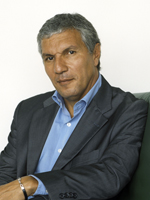 What is your assessment regarding information quality? Is there a trend towards the Conseil imposing sanctions on ethical grounds in larger numbers? What is your assessment regarding information quality? Is there a trend towards the Conseil imposing sanctions on ethical grounds in larger numbers?
The Conseil's charge is not to "sanction"; but, rather, to safeguard the quality of audiovisual information, itself, a prerequisite for credibility. Let me point out that the increase in the number of instances addressed by the Conseil, did not translate into an increase in the number of sanctions: 112 files were reviewed by the Conseil in 2011; action was taken in only 52 cases. In almost all of them, the Conseil merely recalled applicable rules and regulations. Sanction proceedings were initiated in only 2 cases. One of the biggest challenges, in the near future, is what I would call "image traceability", in particular, with respect to images found on the Internet, i.e., images whose identification is a problem, but that are also not easily dismissed. In conflict zones, for instance, they may be the only images available. On 5 July 2011, I convened a meeting of all TV channels' heads of information to exchange views on the issue. We also broached the outsourcing of reporting to external suppliers. Industry representatives welcomed the opportunity to share and compare their experience. I intend to hold this kind of meetings with editorial staff on a regular basis. We share one goal: maintaining the audiovisual media's position as a reference for information.
2011 was an eventful year regarding digital terrestrial radio. What insight may be drawn from this? When will digital terrestrial radio become a reality?
Given the saturated context since the success of the "FM+" Plan, the Conseil firmly believes digital terrestrial radio to be the only way for stations to continue developing. It also offers listeners new services: they can pause, or record programmes. Various experiments and demonstrations in Paris, Lyon, Marseilles, Nantes, and Brest, are continuing, and provide a wealth of insight. On 13 October 2011, following the release, on 11 May 2011, of the Kessler report, the Conseil set up, with the whole industry, an Observatoire de la radio numérique terrestre (digital terrestrial radio monitoring body). Its mandate is to draw insight from experiments abroad. In addition, on 3 November 2011, the Conseil published a call for tenders by digital radio distributors in the L band covering the territory of mainland France in its entirety. This new call for tenders supplements the call for tenders in band III making up the backbone of digital radio. With the publication of another call for tenders, in a further 20 areas, which would bring population coverage to 50%, my hope is that 2012 will be the year to see the birth of digital terrestrial radio.
In 2011, you went on numerous cooperation missions to North Africa. In what context? And for what purpose?
The Conseil keeps in regular contact with regulators from all over the world; and, in particular, North Africa and the Maghreb. In the days following the Arab revolutions, I went on several visits to Tunisia to share our experience in regulating broadcasting (régulation audiovisuelle), and upholding pluralism. The point is not to apply a one-size-fits-all template from abroad to complex local realities; rather, we offer technical cooperation to consolidate democracy.
Emmanuel Gabla
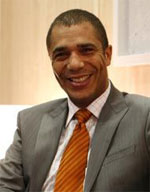 On 28 April 2011, the Conseil supérieur de l’audiovisuel organised a symposium on "connected TVs". Why then? What is the follow-up? On 28 April 2011, the Conseil supérieur de l’audiovisuel organised a symposium on "connected TVs". Why then? What is the follow-up?
The Conseil is the first European regulatory body to broach the issue. It is an actual, albeit still gradual, development. There is a dearth of benchmarks, statistics, or, simply, hindsight. What we have found, primarily, is that the Internet is now a supplement to, rather than a competitor of, television; it serves to enhance content exposure. However, with all industry professionals, we wanted to fathom what they entails in terms of young audiences' protection, combating racism and anti-Semitism, upholding pluralism, securing future financing for new original content, and protecting audiovisual groups' competitiveness. Now that the theoretical issues have been addressed, I believe it important, in 2012, to turn to a new practice-centred, experience-based approach. The Conseil intends to pursue reflection on the issue by means of a permanent body, bringing on board all professionals, to offer solutions in synch with novel needs. The goal is not to hinder anyone's actions, impose a single model, or violate freedom. To the contrary, it is about protecting each and everyone's freedom—that of editors, creators, writers, producers, and viewers—so as to achieve concerted, consensual, generally-accepted, regulation.
In 2011, why did the Conseil, adopt a second deliberation on on-line gambling? What are the new provisions, if any?
Under the law of 12 May 2010, certain areas of on-line gambling are open to competition. Under article 7, and subject to certain conditions, commercial communications related to on-line gambling are authorised. Therefore, in a deliberation adopted on 18 May 2010, the Conseil specified conditions to govern commercial communications broadcasting, for a period of one year. The objective was to ensure efficacy of the rules, in particular, as regards minors' protection, and addiction prevention; and to make any amendments, where necessary. The deliberation of 27 April 2011, applicable until 30 June 2012, is, in large parts, similar to its predecessor. However, it places the onus on the industry to adopt a charter containing undertakings to prevent contents broadcast in sports shows to be stripped of their initial purposes. A first draft was forwarded to the Conseil in October 2011; a second one, in December. In addition, on 14 November 2011, pursuant to article 8 of the law of 12 May 2010, the Conseil forwarded to Parliament a report assessing the "consequences of advertising in favour of gambling", including additional proposals by the Conseil. This is a new area of work in which a balance must be achieved between freedom and responsibility.
Patrice Gélinet
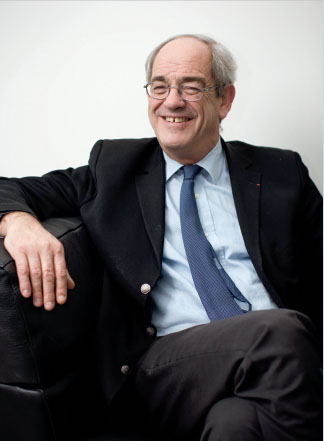 In 2011, you supervised the overhaul of the comités techniques radiophoniques. What did the overhaul include? What did it change locally? In 2011, you supervised the overhaul of the comités techniques radiophoniques. What did the overhaul include? What did it change locally?
Set up under article 29-3 of the law of 30 September 1986, the comités techniques radiophoniques (CTR) act as regional "branches" of the Conseil. Their remit has grown consistently ever since. Under the law of 9 July 2004, they were authorised to take part in the review of tenders for local television channels, and in monitoring the latter's obligations. Under the law of 5 March 2009, they were granted genuine decision-making power in radio: license renewals, minor changes to legal agreements (conventions), and temporary licenses, are now sanctioned by CTRs. On 10 November 2009, the Conseil adopted a first deliberation setting forth the conditions for the implementation of article 77 of the law of 5 March 2009. Accordingly, as from 1 January 2010, the comités' remit was extended to include category "A" local radio stations. In December 2010, a review showed that 97% of the comités' decisions had become enforceable. On 12 July 2011, on the strength of this success, the Conseil decided to further extend the remit of the comités—now named comités territoriaux de l’audiovisuel (CTA)—to include, where they come under the jurisdiction of a single CTA, category "B" local radio stations, i.e., an additional 150. The Conseil now only steps in, in the event of a dispute; benefits are: a reduction in process time; and closing of the distance between the decision-making level and local specificities.
2011 saw completion of the "FM+" Plan. What is your final assessment? What's next for radio?
Starting in 2004, the "FM+" Plan's purpose was to optimise the spectrum, and release frequencies. Fifteen general calls for tenders were published. The last two, in régions Alsace, Lorraine, and Rhône-Alpes, related to 930 frequencies. At the end of the day, the "FM+" Plan released some 1,300 frequencies, i.e., a 22.3% gain, compared with the initial goal of 10%. The Conseil made sure the frequency gain benefited all radio categories. However, our backs are against the wall now: absent digital terrestrial radio, the French radio landscape may "freeze" for at least a generation. Radio cannot remain an isolated island in a digital ocean!
You also chair the "French language" task force.
It is one of the CSA's unknown charges, despite the crystal clear provision in the law of 30 September 1986: the Conseil is in charge of ensuring "defence and showcasing of French language and culture" (veiller à la défense et à l’illustration de la langue et de la culture françaises). It has been an honour to succeed Sylvie Genevoix, as head of the task force. Upon my appointment, I held consultations with an array of experts. We have been considering several initiatives for 2012, including, for instance, a new award.
Christine Kelly
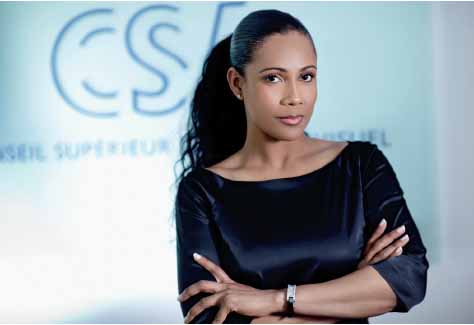 What did the Conseil do in preparation for the election period? What are the safeguards for political parties and future presidential candidates? What did the Conseil do in preparation for the election period? What are the safeguards for political parties and future presidential candidates?
The Conseil's approach has been an entirely new one. In spring of 2011, I personally met with all political parties to explain the legal framework to them, and answer questions on their part. A second round of meetings was held at the end of the year. On 30 November 2011, in preparation for the presidential election, the Conseil adopted a deliberation setting forth rules to apply to speaking time. Under the rules, the principle of fairness applied to candidates' speaking time, whether they were officially running, or were assumed to be; subsequently, once the official list of candidates had been issued by the Conseil constitutionnel, the applicable principle was that of equality. Under the deliberation, the electoral period started on 1 January 2012, as had been the case for all previous presidential elections, except for 2007, where we had recommended December 2006. Comments from channels and stations were taken on board in this respect. Finally, on 19 October 2011, having noted grave imbalances in speaking times, we did not step back, and served formal notices (mises en demeure) on five editors.
In 2011, the Conseil took practical action to counteract an old issue that had led to recurring grievances on the part of viewers, i.e., advertising sound levels. Can you elaborate?
Action on the part of the Conseil was all the more urgent as DTT had become a favourable environment for the development of a process known as "dynamic compression" that increases each frequency's range close to the maximum authorised level. The number of complaints sent to channels had increased dramatically: 123 in 209; 134 in 2010; that's three complaints per week! On 19 July 2011, I introduced a deliberation setting forth specific terms and conditions, and a specific timeline, to quickly improve listening comfort, as early as start of 2012. France is the first country in the world to have harmonised sound levels between both, programmes, and channels. Further work is necessary. In early 2012, I will forward a report to Parliament to propose legal amendments to reach further, and bring onboard ADSL, cable, and satellite distributors.
On 11 May 2011, the Conseil delivered the second assessment report in relation to the charter promoting health-conducive nutrition and physical exercise. Where has progress been achieved?
The numbers speak for themselves: between 2009 and 2010, the total annual number of programmes referring to healthy living, or mentioning the www.mangerbouger.fr website, increased 78%. Over the same period, advertising by INPES (French national institute for health prevention and education) reached €3.6 million, from €2 million, due, in particular, to the 60% rebate provided for in the charter. France is also the only country in the world where scenes of food consumption in front of a screen are not shown. Considerable effort on the part of "youth" channels must be underscored.
Françoise Laborde
 On 25 January 2011, the Conseil supérieur de l'audiovisuel established a committee to reflect on the future of programmes. How is the work organised? What are the outcomes? On 25 January 2011, the Conseil supérieur de l'audiovisuel established a committee to reflect on the future of programmes. How is the work organised? What are the outcomes?
The committee organised twenty-four hearings on reality TV. Reality TV triggers numerous controversies, yet, situations differ widely. It emerged very quickly from the conversations that there are two kinds of shows. The first one is shows in which people are "shut in". The second one is shows in which the behaviours of people are watched, as they are put in artificial situations. Far from being on the wane, reality TV will evolve; if only, to adjust to new ethical, or regulatory, requirements. The Conseil has had to step in on numerous occasions to ensure compliance. "Self-regulation" tools have been set up by producers and editors. There seems to be genuinely heightened awareness within the industry. For this reason, the committee has issued additional recommendations in order to enhance protection of contestants and young audiences: counselling before, during, and after shooting; no degrading situations; permanent display of the {"prohibited for those under 10" / "not recommended for those under 10"} sign, where justified. The point is not to hamper creativity, or encroach upon editorial freedom; it is about programme quality.
On 7 November 2011, you introduced the new campaign for the "youth-suitability" rating system. What is your assessment of the Conseil's actions in this area?
The youth-suitability rating system is a "tool" to convey information. The awareness campaigns have raised the profile, acceptance, and even, popularity of the system with families. Let me quote a single number: in 2009, the 100 favourite programmes of 4 to 10 year-olds were all "all audiences". In 2011, we produced two new short films to address new challenges: screen ubiquity; and children being confronted with images on their own. We continue to take action, in the event of violations. In 2011, the Conseil served 3 formal notices (mises en demeure), and sent 33 reminders about regulations. Finally, we have been considering possible topics for next year: girl representation on TV; protecting minors against certain images found on the Internet; or display of the {"prohibited for those under 10" / "not recommended for those under 10"} sign throughout the broadcast.
In 2011, the Conseil entered into legal agreements (conventions) with new channels broadcasting on networks other than off-air. What are these channels?
Besides DTT, the Conseil regularly enters into legal agreements (conventions) with new services broadcasting on the other networks. In 2011, 16 new agreements were entered into: one is a cinema news channel; one is devoted to regional arts and crafts, and the art of living; five others are teleshopping services. They are highly-themed, pay channels, supplementing what is already offered on DTT.
Francine Mariani-Ducray
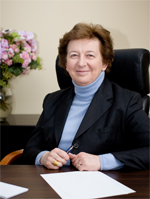 In 2011, you steered negotiations between the music industry and radio representatives regarding the implementation of the minimum number of songs in French. What changes did they bring about? In 2011, you steered negotiations between the music industry and radio representatives regarding the implementation of the minimum number of songs in French. What changes did they bring about?
Following consultations under the leadership of the Conseil's "Music" and "Radio" working groups, professional organisations of the music and radio industries agreed on proposals to promote artists singing in French, bearing in mind the trend-setting role radio continues to play in favour of today's bands, even in the age of the Internet. Genuine progress was achieved thanks to pragmatic steps: listening hours known as "significant" have changed in relation to week-ends; the minimum airing time of a track has been modified; the period in which a track is deemed a "new production" has been extended. The integrity of songs aired on the radio will be enhanced. Most of the steps thus adopted translated into amendments to the radio stations' legal agreements (conventions). Two improvements to the jointly available information were also introduced: the Observatoire de la musique, which provided input to the consultation, now includes a larger number of radio stations in its panel; producers have undertaken, via the two companies that collect and distribute royalties, to forward Observatoire de la musique, hard data relating to the annual production of new French-language material per musical genre. The agreement is not only about technical steps. It encourages further dialogue between stake-holders to enhance exposure of French-speaking and European material. Further exchanges will take place; and, together with the industries, I will conduct an assessment at the end of 2012.
When will you be able to assess the efficacy of the 2010 "production" décrets (decrees).
Décrets 2010-416 of 27 April 2010, and 2010-747 of 2 July 2010, resulted from the industry agreements of 2008 and 2009. They introduced a more global approach, giving groups the option to pool their audiovisual and cinema production obligations. The French Parliament has called for an assessment, one year into implementation. New statistical tools were set up to this end by the Conseil in 2011. My goal is to conduct an assessment with the industry, prior to summer of 2012. The insight provided by the data will also serve to fuel reflection work at Conseil, in particular, as regards the use of connected TVs.
Alain Méar
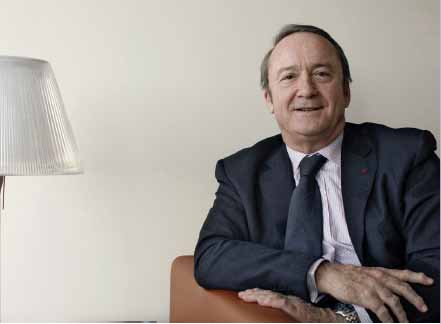 Digital switch-over was completed in 2011. Why was it so successful? What lessons may be drawn? Digital switch-over was completed in 2011. Why was it so successful? What lessons may be drawn?
Digital switch-over was highly challenging, not only at the technical level, but also, from a human perspective. For the last five years, my single guiding principle has been fairness: between geographical areas; and between people. Let me point out, that it is at the Conseil's behest that a "département" goal—coverage of 91% of each département's population—has been added to the national goal of 95% under law. That is why, upon analogue switch-off, coverage was 97.3% of the population of mainland France (métropolitaine). In addition, in the French overseas collectivités, pursuant to the report I delivered to the Government on 3 July 2008, digital switch-over translated into an extension of what is offered on free television, thanks to the digitization of Tempo's frequencies, and the establishment of ROM1, a pioneering multiplex using MPEG 4—the latest compression standard. Switch-over followed the same timeline as in mainland France. Reception problems in certain "sensitive" areas must now be ironed out. The Conseil has set up a follow-up group, in close cooperation with ANFR (Agence nationale des frequences), in charge of finding solutions for each area. Following the success of digital switch-over, a call for tenders in relation to six frequencies was published on 18 October 2011. Homogeneous coverage of all channels, thus achieved, will provide all viewers with access to a further extended offer, before the end of 2014. This is a welcomed change from analogue broadcasting.
The Conseil started work on the issue of diversity three years ago. What is the on-screen translation of this work?
We started off with a simple basic principle: if people cannot relate to what they see on television, they won't watch television. Figures from the 2011 diversity survey (baromètre de la diversité) show diverging developments. If progress has been made in terms of background diversity representation (at 15% from 12%), improvements are still wanting as regards: gender equality; low-income socio-professional categories; and disability. However, in 2011, the CSA noted genuine awareness to the issue. Channels have made specific commitments, such as: systematic casting of actors with a diverse background; airing of series offering an intelligent off-centered take on disability; and increased female representation among TV personalities. To support these efforts, Rachid Arhab and I, proposed a three-year renewal of the diversity survey (baromètre de la diversité). I find it comforting that the Conseil's work has started spreading beyond borders. On 19 September 2011, a statement in favour of gender equality in audiovisual media was adopted by the 26 members of Réseau francophone des régulateurs des médias (REFRAM).

|